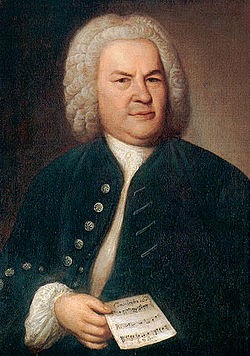| Edit | Map | Home | New Post | New Gallery |
Support
|
 | |
Johann Sebastian Bach is a German composer and musician of the Baroque era, who collected and combined in his work traditions and the most significant achievements of European musical art, and also enriched all this with a virtuoso use of counterpoint and a subtle sense of perfect harmony. Bach is the greatest classicist who left a huge legacy, which became a golden fund of world culture. He is a universal musician, in his work he covered almost all known genres. Creating immortal masterpieces, he transformed each beat of his compositions into small works, then combining them into priceless creations of exceptional beauty and expressiveness, which vividly reflected the diverse spiritual world of man. A brief biography of Bach Johann Sebastian Bach was born in the German town of Eisenach in the fifth generation of a family of musicians on March 21, 1685. It should be noted that musical dynasties were quite common at that time in Germany, and talented parents sought to develop the appropriate gifts in their children. The boy's father - Johann Ambrosius - was an organist in the church of Eisenach and court concertmaster. It is obvious that it was he who gave the first violin and harpsichord lessons to his young son. Interesting facts about Bach
Bach was a recognized organ specialist. He was invited to check and tune instruments in various Weimar temples, where he lived for quite some time. Each time impressing customers with amazing improvisations, which he played to hear how the instrument needed for his work sounded. During the service, Yohan was bored of performing monotonous chorales, and he, not restraining his creative impulse, impromptuly inserted his small embellishing variations into the established church music, which caused great displeasure of the superiors. Better known for his religious works, Bach also achieved success in secular music, as evidenced by his "Coffee Cantata". Bach presented this work full of humor as a small comic opera. Originally called "Schweigt stille, plaudert nicht" ("Shut up, stop talking"), it describes the lyrical hero's passion for coffee, and it is no coincidence that this cantata was first performed in a Leipzig coffee house. At the age of 18, Bach really wanted to get the position of organist in Lübeck, which at that time belonged to the famous Dietrich Buxtehude. Another contender for this place was G. Handel. The main condition for occupying this position was marriage to one of Buxtehude's daughters, but neither Bach nor Handel dared to sacrifice themselves in this way. Johann Sebastian Bach liked to dress up as a poor teacher and visit small churches in this form, where he asked the local organist to play the organ a little. Some parishioners, hearing the extremely beautiful performance for them, left the service in fear, thinking that the devil himself had appeared in their church in the form of a strange person.
The Russian envoy in Saxony, Hermann von Keyserling, asked Bach to write a piece to which he could quickly fall asleep. This is how the "Goldberg Variations" appeared, for which the composer received a golden cube filled with a hundred luidors. These variations are still one of the best "hypnotics". Johann Sebastian was known to his contemporaries not only as an outstanding composer and virtuoso performer, but also as a person with a very difficult character, intolerant of the mistakes of others. There is a well-known case when a bassoonist, publicly insulted by Bach for an imperfect performance, lashed out at Johann. A real duel took place, as both were armed with daggers. Bach, who was fond of numerology, liked to weave the numbers 14 and 41 into his musical works, because these numbers corresponded to the first letters of the composer's name. By the way, Bach also liked to play with his last name in his works: the notation of the word "Bach" forms a cross. It is this symbol that is the most important for Bach, who considers such coincidences to be no coincidence.
Thanks to Johann Sebastian Bach, not only men sing in church choirs today. The first woman to sing in the church was the composer's wife Anna Magdalena, who has a beautiful voice. In the middle of the 19th century, German musicologists founded the first Bach society, the main task of which was to publish the composer's works. At the beginning of the twentieth century, the society dissolved itself, and the complete collection of Bach's works was published only in the second half of the twentieth century at the initiative of the Bach Institute, created in 1950. There are a total of two hundred and twenty-two Bach societies, Bach orchestras, and Bach choirs in the world today. Researchers of Bach's work suggest that the great maestro wrote 11,200 works, although the heritage known to posterity includes only 1,200 compositions. To date, there are more than fifty-three thousand books and various publications about Bach in various languages, about seven thousand complete biographies of the composer have been published. In 1950, V. Shmyder compiled a numbered catalog of Bach's works (BWV-Bach Werke Verzeichnis). This directory was updated several times as the data became more accurate
|
Author: Sonya Version: 1 Language: English Views: 0
|
Short link: https://www.sponsorschoose.org/a161
Short link to this version: https://www.sponsorschoose.org/n187
Created by Sonya at 2023-05-30 06:58:54
Last modified by Sonya at 2023-05-30 22:07:27
|